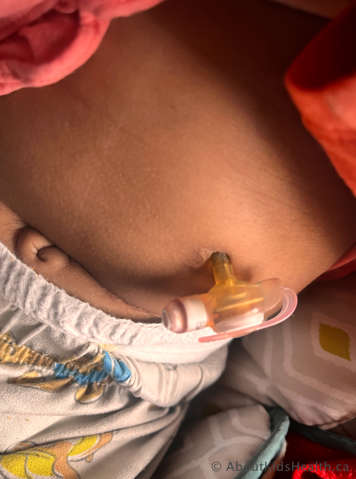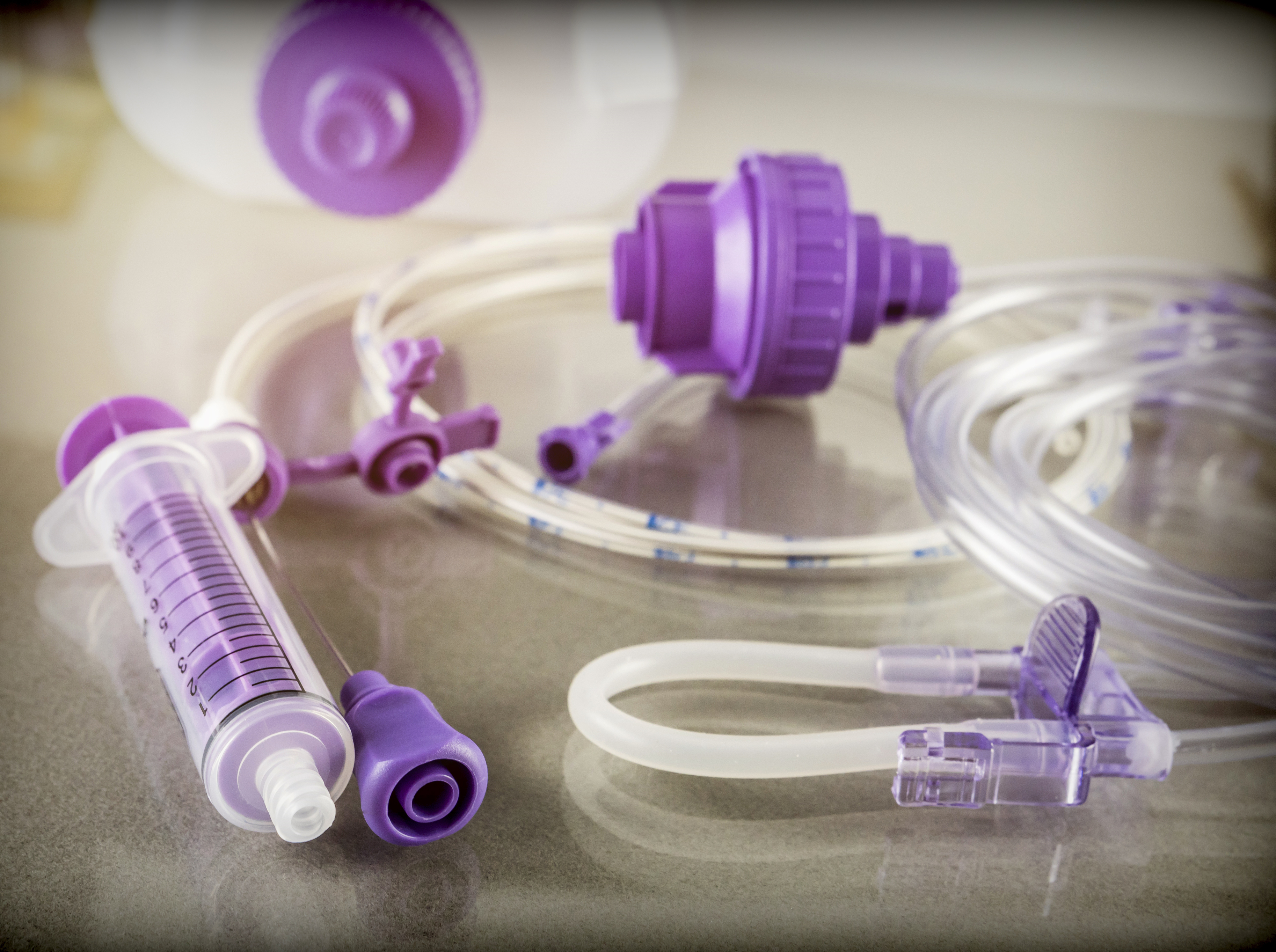The fit of your child’s feeding tube is important. A tube that does not fit properly can cause stoma issues and leaking. The stoma is a surgical opening in your child’s belly (abdomen) through which the feeding tube is placed. The tunnel from the outside into the stomach is called the tract. When your child’s feeding tube is first inserted, the tract will be properly measured by the health-care team. However, the tract may need to be remeasured as your child grows, gains or loses weight or experiences other body changes.
How to tell if your child’s tube is too tight
Low-profile tubes are too tight if there is an indent in the skin. You may notice redness, skin breakdown, or other stoma issues because of the tight fit. When the tube is too tight, you may be able to decrease the amount of water in the balloon. Less water in the balloon makes for a looser fit. However, if you decrease the water below the minimum volume, there is an increased risk the tube may come out.
Another reason the tube is too tight may be because of increased pressure or air in the stomach. Your child may benefit from venting the G tube every so often. Please see Venting a feeding tube to manage fullness and bloating for instructions on how to do this.
How to tell if your child’s tube is too loose

Your child’s tube is too loose if it is dangling away from the stoma or sticks out too much. You may notice leaking, skin breakdown, or other stoma issues if the tube is too loose. When the tube is too loose, you may be able to increase the amount of water in the balloon. More water in the balloon will make a tighter fit.
Additional dressings may help adjust the fit of a loose tube. You can use foam dressings to fill the gap between the tube and the stoma. This can also help if the stoma is leaking, as the foam dressing can collect drainage.
Tract remeasurement
A low-profile balloon tube sits level with the abdomen. If the tube appears too tight or too loose, the tract may need to be remeasured. This means finding the new centimeter (cm) length of the tract, between the stoma outside and the stomach inside. Remeasurement may be required as your child grows, gains or loses weight, or experiences changes in their spinal curvature or other body changes.
Tract remeasurement is completed by a health-care provider with an appropriate measuring device.
This process is similar to the exchange of a low-profile G tube and is usually completed without sedation. For low-profile G tubes, the tract can be measured by your G tube specialist. For low-profile G/GJ tubes, the tract can be measured by an interventional radiologist.
Before tract remeasurement, there are strategies that can be tried at home to adjust the fit of a low-profile tube. For example, adjust the balloon water volume. Adding more water to the balloon may help the tube fit tighter. Taking water out of the balloon may help the tube fit more loosely. Please check with your health-care team before doing this if your child’s tube was first inserted within the last eight weeks or if the tube was inserted by a general surgeon.
If you are unsure of the amount of water the balloon can safely hold, or how much was initially in the balloon, you can contact your G tube specialist or refer to the charts below.
General balloon water volumes for balloon G tubes:
| Non-low profile |
Low-profile | |||
|---|---|---|---|---|
| Mic-G | Kangaroo | Mic-Key | AMT miniONE | |
| 12FR | 3 to 5 mL (max 7 mL) | 5 mL | 3 to 5 mL | 2 to 3 mL |
| 14FR | 3 to 5 mL (max 7 mL) | 5 mL | 5 to 10 mL | 3 to 5 mL |
General balloon water volumes for low-profile combination G/GJ tubes:
| Internal tube length | Balloon volume minimum | Balloon volume maximum |
|---|---|---|
| 15 cm, 22 cm and 30 cm | 3 mL | 5 mL |
| 45 cm | 5 mL | 10 mL |
For non low-profile balloon tubes , the retention disk may help to adjust the fit of the tube. Ensure the balloon is in a good position in the stomach before adjusting the retention disk. You can pull slightly on the tube until you feel resistance. This is the balloon on the other side of the tract, against the stomach wall. You can then slide the retention disk down the tube until it is flush with the skin.
If adjusting the balloon volume does not improve the fit of the tube, contact your G tube specialist to arrange a tract remeasurement in the appropriate place.
Take caution in adjusting the size of a low-profile G tube without tract remeasurement. For example, using a low-profile G tube that is too short can cause the balloon to move into the tract. This can cause pain, stoma leakage, and closure of the tract below the short tube.
Important: When increasing the length of a low-profile G tube, tract lengths that are longer than 3.0 cm increase at standard 0.5 cm increments, unlike tract lengths shorter than 3.0 cm. This means there is less concern for tract remeasurement when increasing the length of a low-profile G tube above 3.0 cm.
